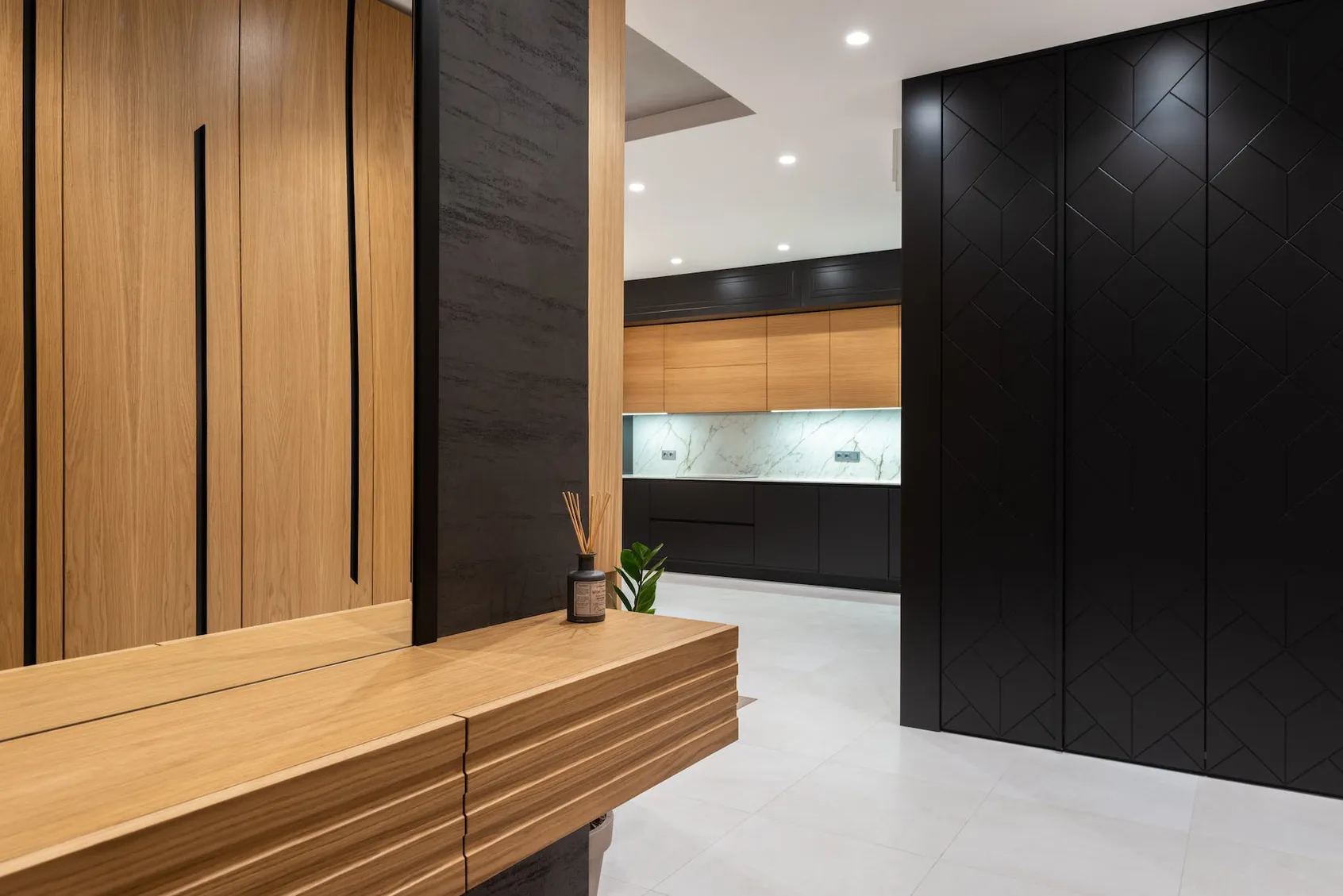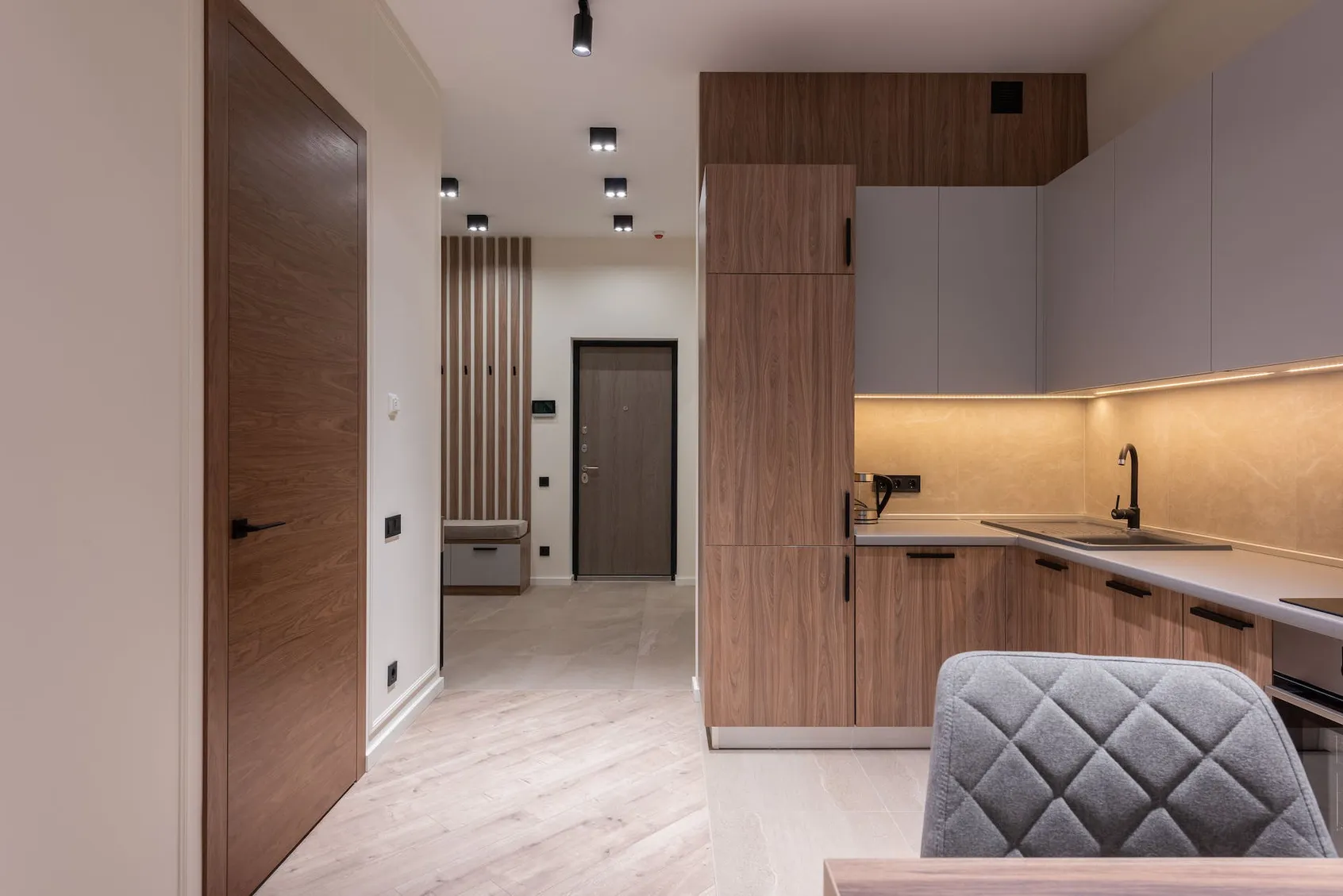Replacing kitchen countertops can be daunting, especially if you are worried it will damage your cabinets. But how can you replace kitchen countertops without damaging cabinets? Fortunately, you can take steps to replace your kitchen countertops without damaging your cabinets.
In this guide, we will discuss the best techniques and materials to ensure that replacing your kitchen countertops is a successful, stress-free process.
Can You Replace Kitchen Countertops Without Damaging Cabinets?
Replacing kitchen countertops and backsplashes can be a daunting task. Before you start, there are several steps to ensure that the process will go smoothly and that you won’t damage your existing cabinets.
First, you’ll need to measure your countertop area to ensure the new countertop will fit. Once you have the measurements, you can shop for the right material. Popular materials for countertops and backsplashes include granite, quartz, marble, and laminate.
Once you’ve chosen your material, you’ll need to prepare the area for installation. This includes removing any existing countertops and backsplashes, as well as cleaning the surface of the cabinets. This is also the time to address any damage to the cabinets, such as chipped paint or scratches, so the new countertop will look its best.
Once the area is ready, installing the new countertop and backsplash is time. It’s important to use the right tools and follow the instructions provided by the manufacturer. This includes measuring, cutting, and installing the countertop and backsplash and sealing the edges and corners.
To ensure the countertop and backsplash remain in place, you must secure them with screws or clips. This will help to prevent the countertop from shifting and warping. Finally, you’ll need to clean the countertop’s surface and backsplash with mild detergent and warm water.
Replacing your kitchen countertop and backsplash can be challenging, but it doesn’t have to be. Following these steps and using the right tools, you can easily replace your countertop and backsplash without damaging your existing cabinets.

Preparation And Supplies Needed For Countertop Replacement
When replacing kitchen countertops, it is important to consider the potential damage to the cabinets. Granite is a popular material for countertops because of its durability and beauty, but it can be difficult to remove and replace without causing damage to the underlying cabinets. Fortunately, there are some steps you can take to ensure that your cabinets remain intact and undamaged when replacing your granite countertops.
- Measure your existing countertop carefully to ensure you purchase the right material for your replacement.
- Choose your replacement material, whether granite, quartz, or something else. Consider your budget and your needs when making this decision.
- Remove any appliances or items from your countertop, and disconnect any plumbing or electrical connections.
- Prepare the area where you’ll work, including laying down protective coverings to prevent damage to floors, cabinets, and other surfaces.
- Ensure you have all the necessary tools and supplies, including a saw, drill, adhesive, caulking, and any other materials needed for your specific replacement project.
Removing The Old Countertop
The first step is to measure the countertop area that needs to be replaced and then purchase the appropriate size countertop for the space. Once the countertop has been purchased, it is time to begin the removal process.
Beginning with the cabinets, the new countertop will fit flush against the existing cabinets. The next step is to remove the existing countertop. This can be done using a utility knife to cut the countertop adhesive.
Once the countertop is removed, you must inspect the cabinets to ensure the removal process does not damage them. If there is any damage, you must make any repairs before proceeding.
Ensure all the doors and drawers are removed so the area beneath the countertop is accessible. Next, use a chisel to remove any existing caulking from the area around the countertop. Once the old caulking is removed, use a level to ensure the area around the cabinets is level.
Installing The New Countertop
First, you must measure the area where the new countertop will be installed. This will ensure that you purchase the correct size countertop for your kitchen. Once you have the measurements, you can shop for the new countertop. It is important to note that many different materials and styles are available, so you can choose a countertop that will complement your existing cabinets.
Once you have the countertop, you can begin to install it. This process can involve some minor carpentry work, so ensuring you have the right tools and supplies is important. You will also need to ensure that the countertop is level and securely attached to the cabinets.
Sealing The Countertop Edges
Once the area is level, begin to install the new countertop. Before placing the countertop, apply a sealant layer to the top of the cabinets.
This will help protect the cabinets from any water damage when installing the new countertop. Place the countertop in the desired position and then use a drill to secure it.
After installing the new countertop, use a caulk gun to seal the area between the countertop and the cabinets. This will help to ensure a secure and watertight seal.
Finally, seal the edges of the countertop to protect it from water and other damage. This can be done with a silicone-based sealer or with a clear sealant. Once the sealant is dry, your new kitchen countertop is ready.

Securing The Countertop To The Cabinets
Generally, the countertop is secured to the cabinets by brackets and silicone adhesive. The brackets are usually installed at the back of the countertop, while the adhesive is applied around the edges of the countertop, between the countertop and the cabinet frame.
It is important to use the right brackets since they must be able to support the weight of the countertop and its contents. Additionally, the adhesive should be silicone-based for its flexibility and ability to adhere to the surfaces of the countertop and cabinets.
Before installing the countertop, the cabinets must be in good condition. Any loose or damaged pieces should be secured with screws or glue. Once the cabinets are ready, the countertop can be measured and cut to fit the space.
The countertop should be positioned, and the brackets should be screwed into the cabinet frames. Depending on the type of countertop, additional supports may be needed.
The next step is to apply the adhesive around the edges of the countertop. This helps to create a seal between the countertop and the cabinet frame and prevents water or other liquids from seeping inside.
After applying the adhesive, the countertop should be carefully pressed into place and left to dry for at least 24 hours. Finally, the brackets should be checked for tightness, and the countertop should be sealed with a sealant to protect it from stains and scratches.
Reinstalling The Sink And Fixtures
Now it’s time to remove the sink and fixtures. Take note of how the sink and fixtures are connected to the countertop so that you can reconnect them properly. You can use a screwdriver to remove any screws. Once the sink and fixtures are loose, lift them off and set them aside.
Now you can install the new countertop. Measure the space where the countertop will be installed to purchase the right size. Place the countertop in the space, making sure it is level. You can use a level to make sure it is even.
Next, you must attach the sink and fixtures back in place. Depending on your sink type and fixtures, special tools may require. Once the sink and fixtures are attached, you can caulk the edges to seal them in place.
Finally, you can turn the water supply back on and ensure no leaks. You should also use a sealant to seal the seams between the countertop and the cabinets. This will help ensure the countertop stays in place and protect the cabinets from water damage.
Maintenance And Care Of The New Countertop
Maintaining and caring for your new kitchen countertop is essential to keeping it looking beautiful and preserving its longevity. Here are some tips to keep in mind:
- Clean up spills immediately. All spills, especially acidic ones like red wine or lemon juice, should be cleaned immediately to avoid stains.
- Use cutting boards and heat trivets. Cutting directly on your countertop can cause scratches and burn marks, so using a cutting board and trivets when placing hot items is essential to avoiding damage.
- Use gentle cleaning products. When cleaning your countertop, avoid harsh chemicals that can damage the surface. Instead, use mild soap and water or a specifically formulated countertop cleaner.
- Seal granite and other natural stone countertops. Granite and other natural stone countertops should be sealed every few years to prevent stains and bacteria from penetrating the surface.
- Keep up with regular maintenance. Regularly inspect your countertop for any damage, scratches, or cracks that may require repair or replacement.
Alternatives To Replacing Countertops
Replacing kitchen countertops can be expensive and time-consuming, but it doesn’t have to mean damaging cabinets in the process. Several alternatives can help make the process easier and more affordable.
- Refinishing: Refinishing countertops can be done with various materials and products, including epoxy and polyurethane. It can also be done with paint, which is a popular choice for countertops of most types. Refinishing countertops can be done in different colors and finishes and can be applied to create designs and patterns.
- Resurfacing: This process involves sanding down the surface and then applying new material, such as laminate, ceramic tile, or even granite. Resurfacing kitchen countertops in various colors and finishes can be a great way to give a tired, outdated kitchen a new, modern look.
- Installing a countertop overlay: Overlays come in various materials, including laminate, quartz, and granite. This thin sheet of material is placed directly on top of the existing countertop. Overlays are typically easy to install and can be a great way to give a kitchen a fresh, new look without replacing the countertops.
- Installing a new countertop: Install a material directly over the existing countertop in this process. This can be done with materials like granite, marble, or quartz. This process can be time-consuming and somewhat expensive, but it can also give a kitchen a new look without replacing the countertops.

Troubleshooting Common Issues With Countertop Replacement
Replacing kitchen countertops can be daunting, especially if you are concerned about damaging the cabinets beneath. Researching the right tools and techniques is important to ensure the countertop replacement is successful without damaging the cabinets. Here are some tips for troubleshooting common issues with countertop replacement without damaging the cabinets.
- Uneven Substrate: If your old countertop was removed improperly or the substrate is uneven, it can cause your new countertops to sag or bow. It’s important to ensure the substrate is level before installing the new counters.
- Incorrect Measurements: It is crucial to ensure that the measurements for your new countertop are accurate. If the measurements are incorrect, this could lead to the countertop not fitting or leaving gaps. Make sure to double-check measurements before ordering or cutting the new countertop.
- Plumbing or Electrical Obstacles: If replacing a countertop with a sink or cooktop, it’s important to be aware of any plumbing or electrical lines that may pose an obstacle. Always turn off water and electricity before working around these types of obstacles.
- Adhesive Issues: The right adhesive for your countertop material is key. Using the wrong adhesive may not bond properly, separating the countertop from the substrate. Use the correct adhesive for your countertop material and follow the manufacturer’s instructions carefully.
- Seams: Depending on the size of your countertop, you may need to install seams. It’s important to ensure that the seams are well-crafted and level to avoid any future issues with the countertop shifting or breaking. Consider hiring a professional to handle the installation if seams are required.
Kitchen Countertop Replacement Ideas
Replacing kitchen countertops can be daunting, but with the right materials and strategy, it doesn’t have to be. Several kitchen countertop replacement ideas don’t require damaging cabinets, so you can enjoy a stylish new look without the hassle.
The first option is to install a countertop overlay. This thin, lightweight material can be placed directly over existing countertops, giving them a new look without the need for major renovations. Many countertop overlays come in various finishes and colors, so you can customize your kitchen’s look to match your style.
If you want a more permanent solution, install a tile countertop. This type of countertop is made up of individual tiles that are laid in a pattern to create a unique and eye-catching design. Tiles are easy to maintain and can be installed without damaging cabinets, so they are a great way to upgrade your kitchen without breaking the bank.
Finally, if you want to make a big statement, you could consider installing a solid surface countertop. These countertops are made from a continuous sheet of material, such as quartz or granite, and are available in various colors and styles. Solid surfaces protect against heat and spills, making them ideal for busy kitchens.
Can You Replace Countertops Without Damaging Backsplash?
Yes, replacing countertops without damaging the backsplash is possible, but it can be a delicate process. Here are some tips to follow:
- Use a utility or putty knife to remove any caulk between the backsplash and the countertop.
- Use a pry bar or scraper to carefully lift the old countertop off the cabinets. It may be helpful to have someone help you.
- Once the old countertop is off, avoid damaging the backsplash while installing the new countertop.
- Use a silicone adhesive to attach the new countertop to the cabinets, being careful to avoid getting any adhesive on the backsplash.
- Apply a new bead of caulk around the edges of the new countertop to seal it in place and prevent water from seeping behind it.
It is important to note that sometimes it may not be possible to replace countertops without damaging the backsplash, especially if the backsplash is made of tile or if the new countertop has a different thickness than the old one. In these cases, removing and replacing the backsplash may also be necessary.
Can You Save Granite Countertops When Replacing Cabinets?
Yes, it is possible to save granite countertops when replacing cabinets. However, it is important to note that this process requires professional expertise and should not be attempted as a DIY project.
The process involves carefully removing the granite slab from the old cabinets, making any necessary adjustments to fit the new cabinet layout, and then reattaching the granite to the new cabinets. Working with a licensed and experienced contractor with the proper equipment and knowledge is important to safely complete this process without damaging the granite.
Additionally, it is important to consider the age and condition of the granite, as older or damaged countertops may be unable to withstand the removal and reinstallation process.
Conclusion
In conclusion, the right tools and techniques can replace kitchen countertops without damaging cabinets. These steps will ensure that your countertops are replaced properly without any unnecessary damage to your cabinets. With some preparation and care, you can successfully replace your kitchen countertops without damaging your cabinets.
Frequently Asked Questions:
Can you put new countertops on old cabinets?
Yes, you can put new countertops on old cabinets. Depending on your budget and the look you want, you can replace the entire cabinet or just the countertops. If you choose to replace the countertops, you’ll need to measure the existing cabinets to determine the size of the new countertops. To complete the look, you may also want to consider replacing the cabinet doors, drawer fronts, and hardware.
How do you replace countertops without replacing them?
Replacing countertops without replacing them can be done by refinishing or resurfacing them. This involves sanding down the existing countertop surface to smooth out imperfections and then applying a new layer of sealant and stain. If the existing countertop is in good condition, this can be a cost-effective way to give them a new look.
What is the cheapest way to redo kitchen countertops?
The cheapest way to redo kitchen countertops is to install laminate countertops. Laminate countertops are durable, easy to install, and come in various colors and styles. Additionally, they are much cheaper than other materials, such as granite or marble.
What types of countertop materials are available?
Kitchen countertops include granite, marble, quartz, concrete, laminate, slate, soapstone, solid surface, recycled glass, and stainless steel. Each has pros and cons, such as durability, cost, and maintenance. Ultimately, the choice depends on personal style, budget, and needs.
What is the best way to remove an old countertop?
Removing an old countertop is done by disconnecting any plumbing and electrical connections. Then, use a circular saw to carefully cut the countertop into sections, and then use a pry bar and hammer to remove the pieces. Finally, use a chisel and hammer to remove any adhesive holding the countertop.
How long does it typically take to install a new countertop?
The installation time for a new countertop depends on the size and type of countertop being installed. Generally, the installation time for a countertop can range from 2 hours for a small countertop to 4-6 hours for a large countertop.
Are there any special tools or techniques needed to install a countertop?
Yes, several special tools and techniques are needed to install a countertop. For example, a jigsaw or circular saw is needed to cut the countertop to size, a drill and various drill bits are needed to make holes in the countertop, and clamps or caulk can be used to secure the countertop in place. Additionally, caulking and sealing the counters and seams is essential to prevent water damage and ensure a professional finish.
